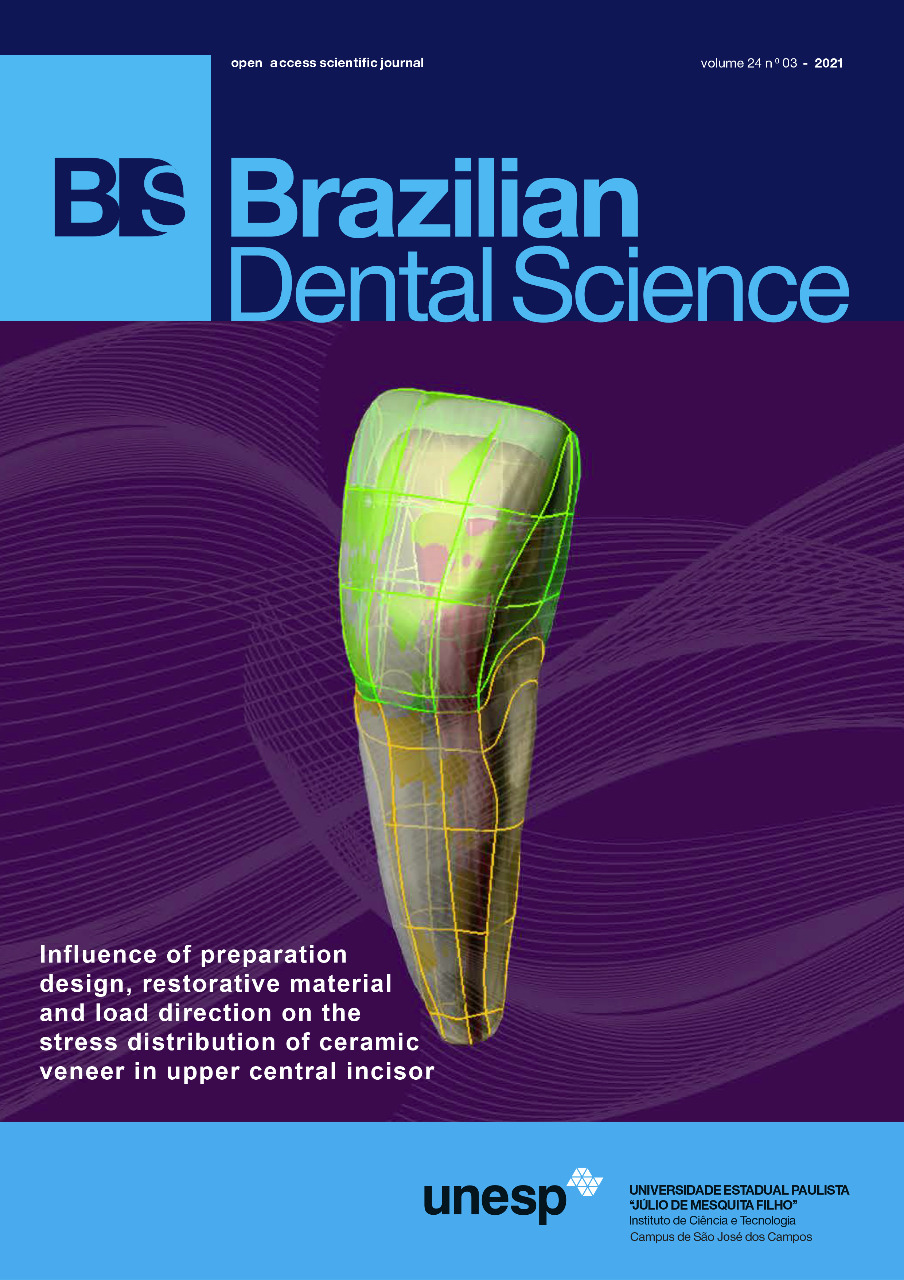Effect of varying thickness and artificial aging on color and translucency of cubic zirconia and lithium disilicate ceramics
DOI:
https://doi.org/10.14295/bds.2021.v24i3.2623Abstract
Objective: The aim of this study is to evaluate the effect of varying thickness and artificial aging on the color and translucency of cubic zirconia and lithium disilicate ceramics. Material and Methods: A total of 30 square shaped disks (12 mm x 12 mm) were fabricated from the cubic zirconia (Bruxzir Anterior) blank and lithium disilicate blocks (E.max CAD), used in three thicknesses (0.5mm, 0.8mm and 1mm). Portable spectrophotometer Vita Easyshade Advance was used to obtain color coordinates, which were substituted in formulas and used to calculate color change and translucency parameter values before and after aging (thermocycling for lithium disilicate and hydrothermal aging for cubic zirconia). Repeated measures Analysis of Variance (ANOVA) was used to study the effect of ceramic type, thickness, aging and their interaction on mean translucency parameter. Two-way (ANOVA) was used to study the effect of ceramic type, thickness and their interaction on mean color change (E). Results: Statistical analysis showed that E.max CAD HT is more translucent than Bruxzir Anterior. Translucency decreased as thickness increased. There was a statistically significant decrease in TP after aging for both materials. Lithium disilicate showed statistically significant greater E when subjected to aging than cubic zirconia, with both E values being clinically imperceptible. As thickness increased, E decreased. Conclusions: Thickness highly affected translucency and color of ceramics. As thickness increases, translucency parameter decreases and color change becomes less evident. Aging also causes a significant decrease in translucency parameter and induces color change however color changes are imperceptible.
Keywords
Aging; Ceramics; Color; Translucency.
Downloads
Downloads
Published
How to Cite
Issue
Section
License
Brazilian Dental Science uses the Creative Commons (CC-BY 4.0) license, thus preserving the integrity of articles in an open access environment. The journal allows the author to retain publishing rights without restrictions.
=================




























